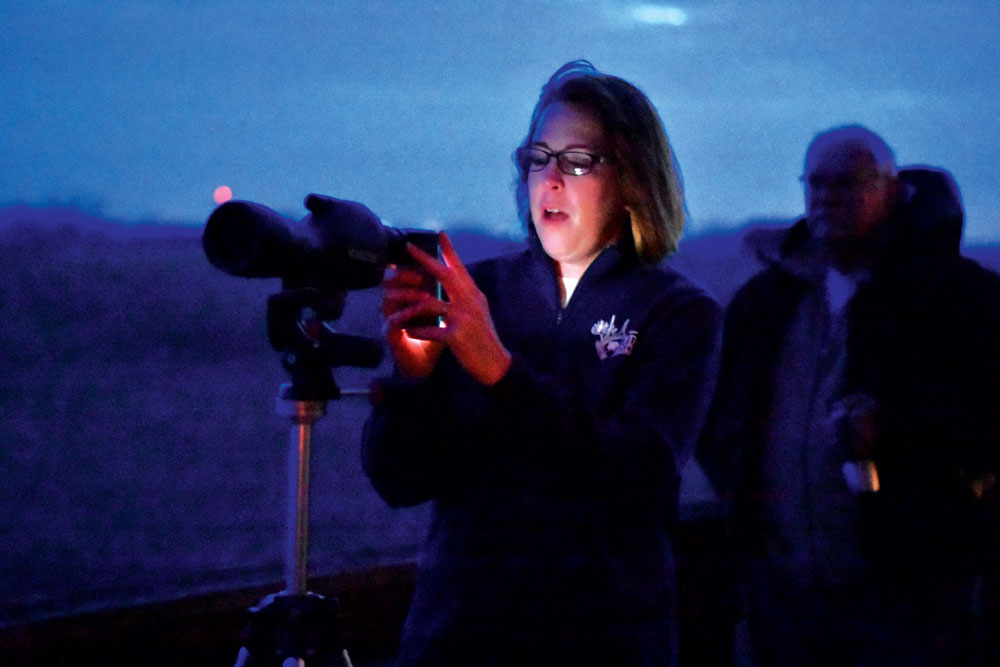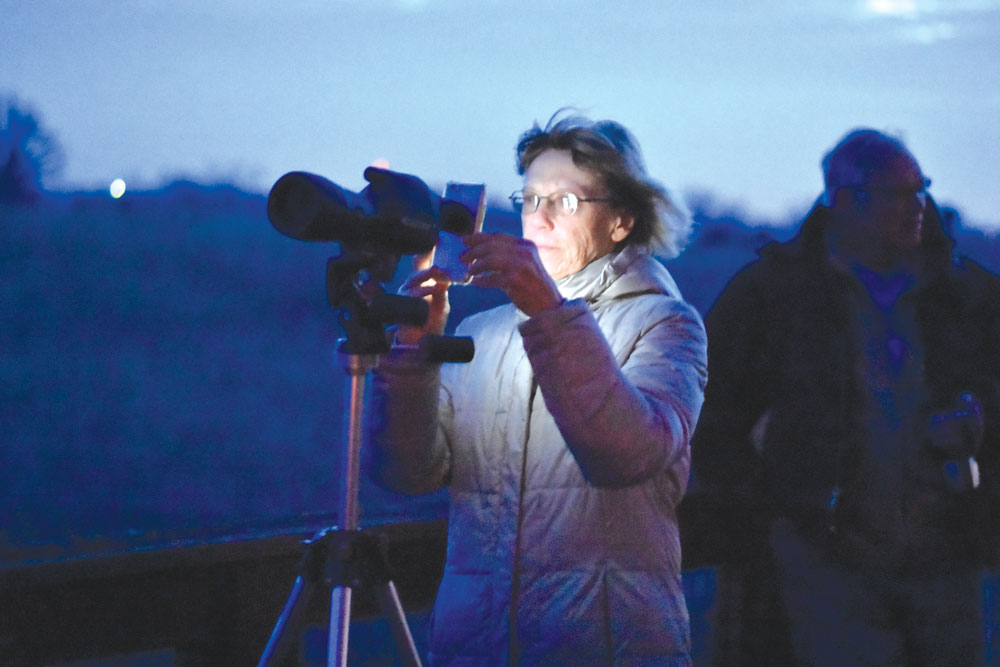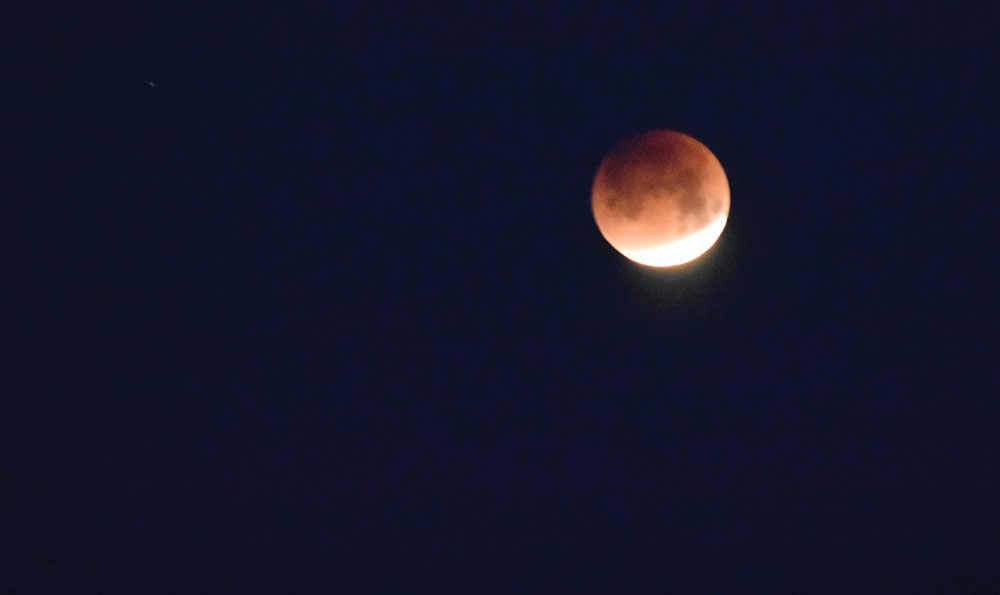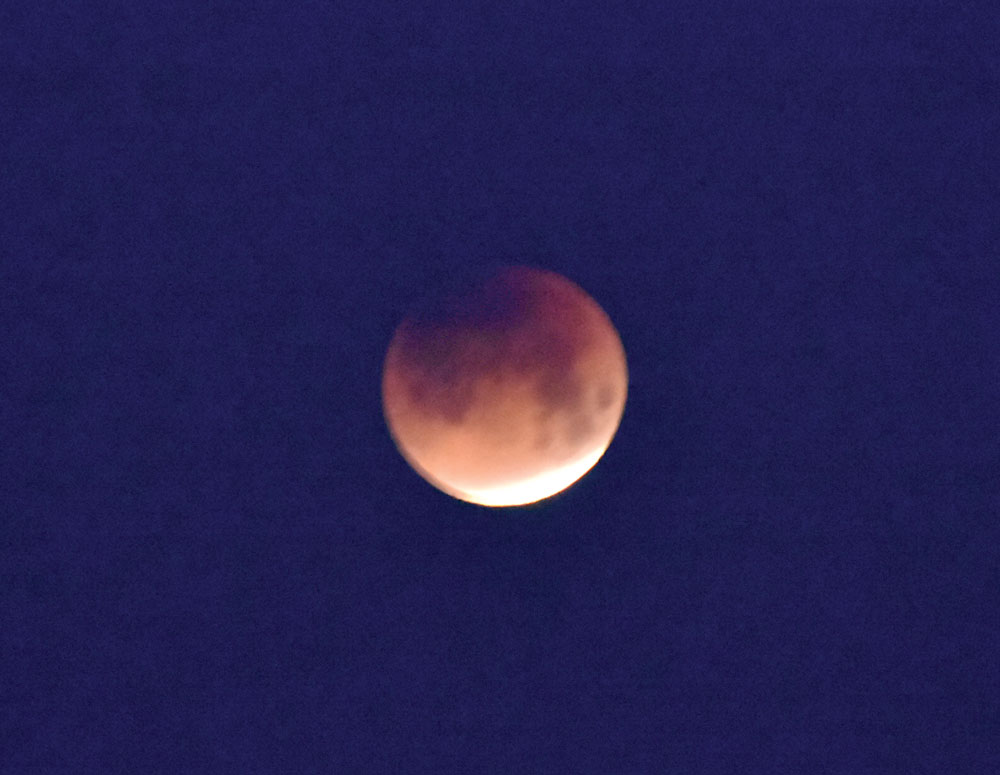The full, blue, blood, super moon eclipsed
By Thomas Nelson, tnelson@charlescitypress.com
Wednesday morning saw a once-in-a-lifetime event. The moon was full, red, large and eclipsed all at the same time.
Floyd County Conservation hosted a viewing of the moon Wednesday at 6:30 a.m. at the Fossil and Prairie Park near Rockford.
The weather wasn’t too cold for the event, getting up to around 30 degrees.
The site gave a relatively clear view of the moon. The clouds cleared for almost 20 minutes, allowing those present to photograph and view the moon as it lined up with the sun and earth.
“The moon’s orbit and sun’s orbit are not the same shapes,” said Floyd County Conservation Naturalist Heidi Reams. “Then the lunar eclipse happens when they perfectly line up.”
Lunar eclipses aren’t rare. There will be another next January, but the combination of blue moon, super moon, blood moon and lunar eclipse is rare and isn’t projected to happen again for another lifetime.
The last time a lunar eclipse happened with a blue moon and super moon and was visible in the Northern Hemisphere was 1866, Reams said.
“That was less than a year after the Civil War ended,” Reams said.
A blue moon is the second full moon in a month. A supermoon is a particularly close full moon, appearing somewhat brighter and bigger. A total lunar eclipse — or blood moon for its reddish tinge — has the moon completely bathed in Earth’s shadow.
“It’s the trifecta,” Reams said.












Social Share